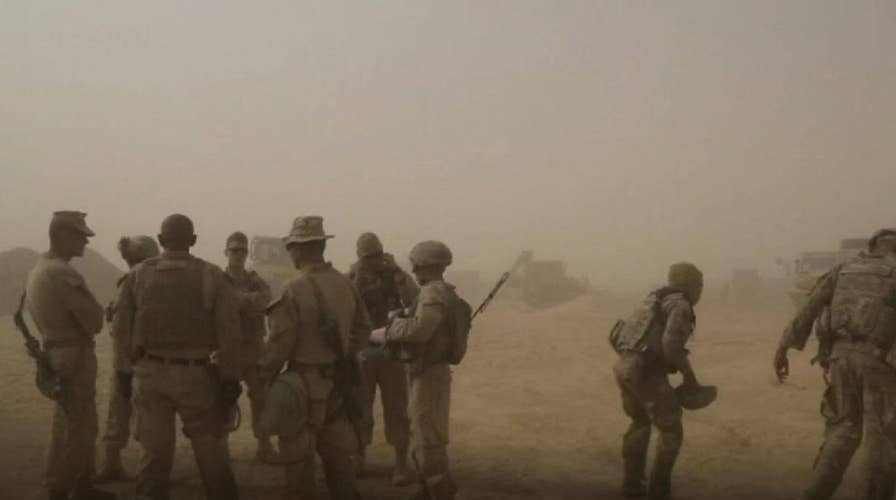Iranian-backed rebels in Yemen claim responsibility for drone attacks on Saudi oil pipelines
The Pentagon increases America's military footprint in the Middle East to counter an unspecified Iranian threat to U.S. troops.
Recent attacks on two oil pumping stations in Saudi Arabia by armed drones coupled with the sabotage of oil tankers in the Gulf may be proof that the Iranian regime is clearly ok with escalating tensions in the region, even if it means disrupting the global oil supply chain and endangering the world’s energy resources.
While Iran has not claimed direct responsibility, these armed drone attacks have Iranian fingerprints all over it. Iran regularly uses its proxy groups to do its bidding in the region and those groups allow Iran to build in deniability for operations.
That’s how Iran’s leadership operates. I saw it with my own eyes in Iraq when Iranian rockets fired by their proxy groups ripped through a wall right in front of me. American soldiers died at the direction of Iran through their proxy militant groups that were equipped and funded with the sole purpose of attacking American interests. Now, the same Iranian General who helps proxies in Iraq kill Americans is the same one who now helps proxies in Yemen, kill Saudis.
BRETT VELICOVICH: MY HUNT FOR ABU BAKR AL-BAGHDADI
The Trump administration recently warned about the planned increase in aggression by Iran and their proxies and we are seeing it play out in Saudi Arabia. With these latest attacks, Iran’s leadership seems to be sending a message that they are upset with renewed sanction pressures and have made a decision internally to instruct their proxy group, in this case, to do something about it by targeting the Saudis energy infrastructure.
For years, Iran has been covertly supplying weapons and technology to a group in Yemen known as the Houthis, and that includes armed drones. This isn’t the first time that the Houthis have conducted a drone attack. In fact, they’ve conducted at least 12 other armed drone attacks in Yemen in the last few years alone. While there is still little information about the exact type of drone used against the pipeline, we can look at previously known Houthi drone attacks that are evidence of technology of Iranian origin.
In 2015, the Iranians reportedly built a drone for Houthi rebels and provided them with the capability to outfit them to be used not for surveillance but as a weapon. The drone they have been using previously is known as a “Qasef-1," based on the Iranian designed Ababil drone. However, these drones previously were only known to have been able to travel a distance of roughly 100kms at a 200km speed per hour. What’s particularly interesting here is how far inside the country these attacks were. The specific locations of the Saudi oil pipeline that were attacked with these armed drones were believed to be highly secure simply by their geographic region. This suggests that either the drones that attacked the pipeline were either launched from inside Saudi territory or the Houthis just significantly upped their capability with satellite technology and were provided with the capability to extend the distance.
This could not have been done without the help of the world’s largest state sponsor of terrorism.
CLICK HERE TO GET THE FOX NEWS APP
Furthermore, their attacks and future strikes that are sure to take place have larger consequences than just physical damage. Following the drone attacks on the pipeline, oil prices jumped 2 percent even after the Saudi’s stated that actual damage to the pipeline was minimal and there was not a significant interruption in production. Attacks like this have so much more wide-ranging economic consequences that well outweigh the physical damage. This also plays into the hands of the Iranians because they need oil prices over $100 a barrel to repair their economy.
The truth is that the weaponization of drone technology is no longer reserved for superpowers that can afford the heavy price tag that used to come with it. Any terrorist group or criminal organization with access to explosives can now purchase a cheap drone online and conduct attacks against their target of choice. But when a local terrorist group like the Houthis combines its hope for chaos with the resources of a nation-state like Iran, we may have just entered into a new form of warfare that we can’t come back from.























